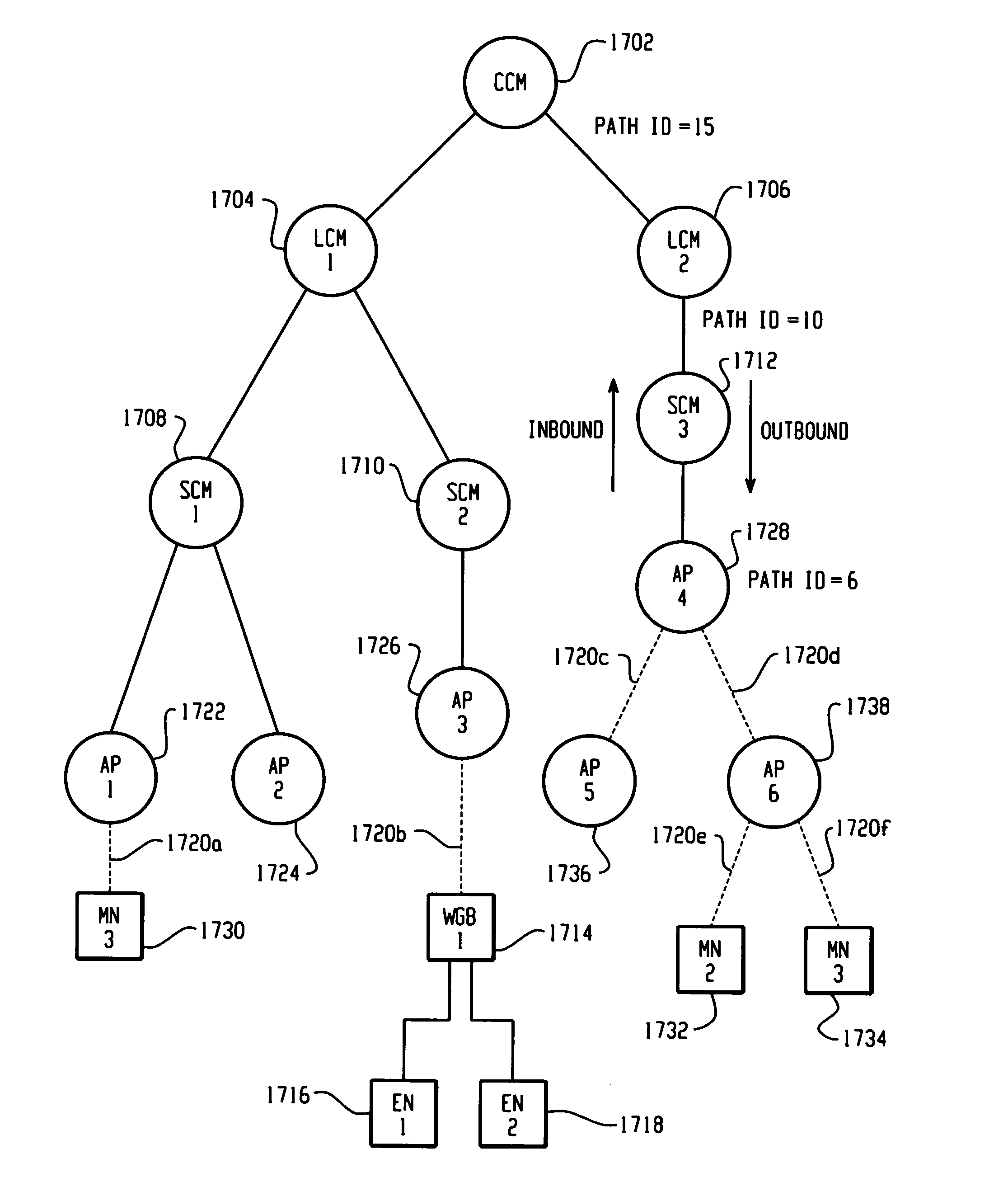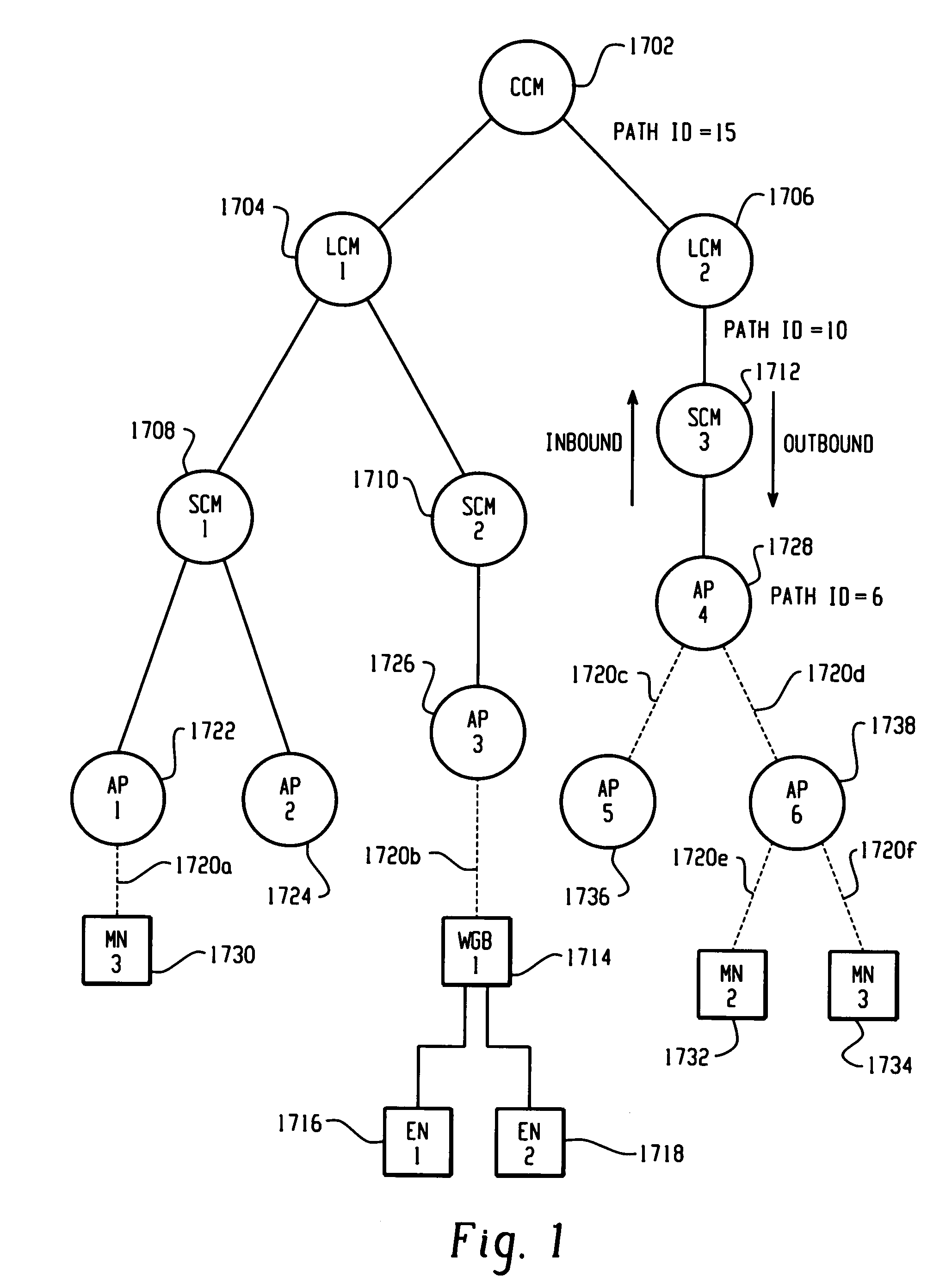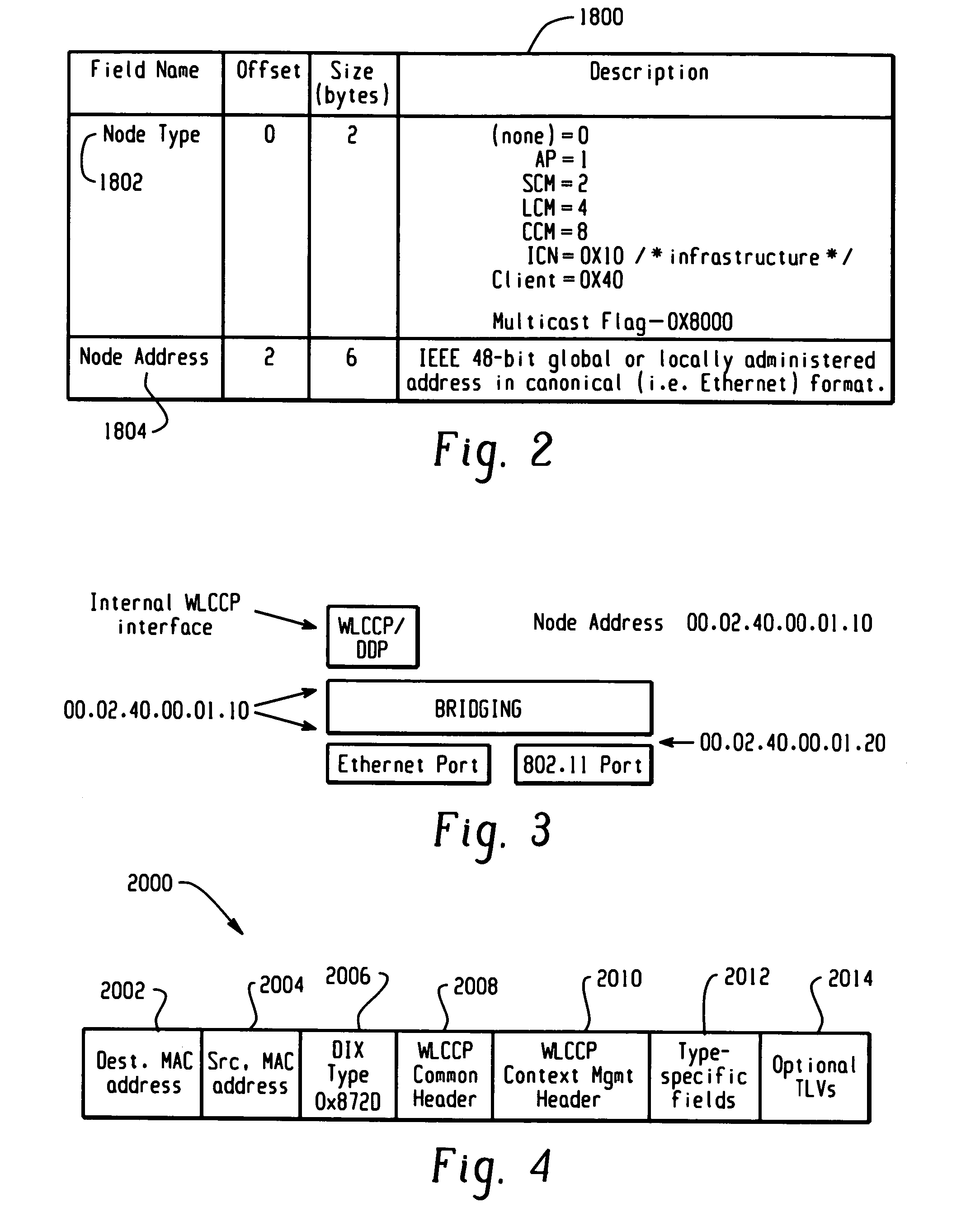Wireless local area network context control protocol
a local area network and context control technology, applied in the field of wireless network hierarchy, can solve the problems of insufficient “old ap” 802.11 reassociation field, distributed protocol is susceptible to inherent race condition, critical context may be lost, etc., and achieve the effect of facilitating network diagnostic tools
- Summary
- Abstract
- Description
- Claims
- Application Information
AI Technical Summary
Benefits of technology
Problems solved by technology
Method used
Image
Examples
Embodiment Construction
[0034] Throughout this description, the preferred embodiment and examples shown should be considered as exemplars, rather than limitations, of the present invention.
[0035] An aspect of the present invention is a Wireless LAN Context Control Protocol (WLCCP) that is used to establish and manage a network topology, referred to herein as the Smart Wireless Architecture for Networking (SWAN), although this aspect is capable of being implemented with any type of network utilizing roaming (e.g., mobile) nodes. WLCCP is used to securely manage the “operational context” for mobile stations in a campus network, such as SWAN.
[0036] The WLCCP registration protocol automatically creates and deletes links in the SWAN topology, securely distributes operational context, and (optionally) reliably establishes Layer 2 forwarding paths on wireless links. WLCCP “Context” messages provide a general-purpose transport for context and management information.
[0037] WLCCP “Trace” messages facilitate netwo...
PUM
 Login to View More
Login to View More Abstract
Description
Claims
Application Information
 Login to View More
Login to View More - R&D
- Intellectual Property
- Life Sciences
- Materials
- Tech Scout
- Unparalleled Data Quality
- Higher Quality Content
- 60% Fewer Hallucinations
Browse by: Latest US Patents, China's latest patents, Technical Efficacy Thesaurus, Application Domain, Technology Topic, Popular Technical Reports.
© 2025 PatSnap. All rights reserved.Legal|Privacy policy|Modern Slavery Act Transparency Statement|Sitemap|About US| Contact US: help@patsnap.com



